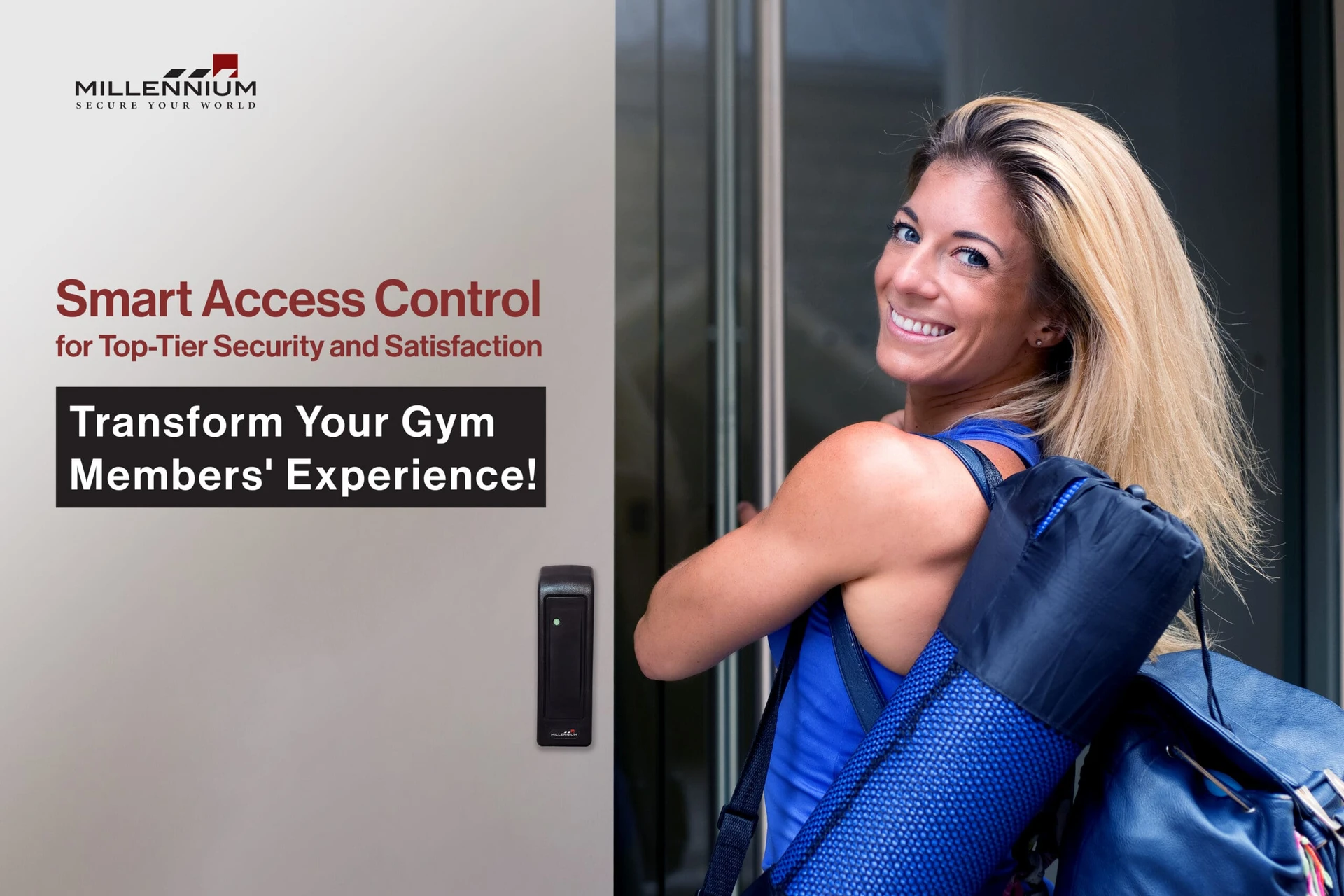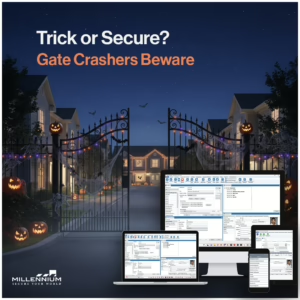In today’s fast-paced fitness world, a reliable gym access control system is essential for both ensuring security and providing an enhanced member experience. Traditional systems like key fobs and access cards were once the go-to solutions for gyms, but with the rise of mobile technology, many gyms are now adopting mobile-based solutions. These solutions allow members to check in with their smartphones, which not only enhances convenience but also aligns with the tech-savvy preferences of modern gym-goers. This shift to a mobile-first approach is not just about convenience—it’s about staying ahead in a competitive industry.
What Is a Gym Access Control System?
A gym access control system is a technology-driven solution designed to regulate and restrict access to fitness facilities. These systems are essential for maintaining security, preventing unauthorized access, and ensuring that only active members can enter the gym. Traditionally, access was controlled with key fobs, access cards, or biometric scanners. Today, many fitness centers are evolving with mobile apps that allow members to check in using their smartphones, streamlining access and improving the overall experience.
The flexibility of modern access control systems also allows for integration with other technologies, such as membership management platforms and security systems like CCTV. This creates a holistic security solution while providing gym owners with valuable insights into facility usage and member behavior.
Why Do Gyms Need Access Control Systems?
Enhanced Security:
A gym access control system ensures that only authorized individuals can enter the gym. Unauthorized access can lead to theft, vandalism, or overcrowding, all of which pose significant risks. A modern system can be customized to restrict access to certain areas, such as locker rooms or VIP zones, based on membership levels, ensuring that only those who are authorized can enter.
For example, integrating an RFID-based system prevents the sharing of access credentials, ensuring that only paying members have entry rights. This protects the gym from unauthorized access and ensures that members are getting the value they pay for.
24/7 Gym Operations:
Many gyms now operate 24/7 to cater to the diverse schedules of their members. Automated access control systems allow gyms to stay open round the clock without requiring staff to monitor entry points at all hours. Whether it’s early morning or late at night, members can use their key fobs, access cards, or mobile apps to access the gym, ensuring convenience and flexibility.
Streamlined Membership Management:
Modern access control systems integrate with membership databases, automatically deactivating access for expired or non-paying members. This feature minimizes administrative work and ensures that only active members are allowed entry, improving both security and compliance with gym policies.
Member Convenience with Mobile Apps:
The smartphone has become central to daily life, and gyms are capitalizing on this by offering mobile-based access control. With a simple scan or tap on their phones, members can enter the facility without needing extra devices like key fobs or cards. This reduces the risk of lost credentials and enhances the overall member experience. Mobile credentials also offer the flexibility to book classes, track gym usage, and receive notifications about promotions or schedules.
Data Insights:
Access control systems provide valuable insights into member behavior, such as peak usage hours and popular facilities. These analytics can inform staffing decisions, equipment placement, and marketing strategies. By understanding usage patterns, gym owners can optimize their facility operations for maximum efficiency and member satisfaction.
Key Features of a Gym Access Control System
Multiple Credential Options:
From traditional key fobs to mobile credentials, gyms can offer members multiple ways to access the facility. This flexibility is essential for catering to a wide range of preferences and ensuring that all members have a convenient way to enter the gym.
Mobile Credentialing:
Mobile credentials are rapidly gaining popularity, allowing members to use their smartphones for secure entry, eliminating the need for physical tokens entirely. This shift to mobile-first solutions enhances the user experience and boosts convenience, as members no longer need to carry extra devices to gain access to the gym.
By integrating mobile credentials with gym apps, members can check in, track their progress, and even receive personalized notifications—all from their smartphones. This seamless integration creates a more personalized and connected gym experience for modern users.
Customizable Permissions:
Access control systems offer the ability to restrict access to specific areas based on membership levels. For example, VIP members may be granted access to premium workout zones or exclusive locker rooms, while basic members may have access only to general areas. This feature ensures that your access control system is aligned with your gym’s membership structure and policies.
Real-Time Monitoring:
Track who enters and exits your gym in real time. This feature enhances security and helps manage occupancy limits during peak hours. With real-time monitoring, you can immediately detect any unauthorized access attempts or security breaches and address them promptly.
Integration Capabilities:
Modern access control systems integrate with membership management platforms, payment systems, and even CCTV for a more comprehensive security solution. This integration allows gym owners to manage memberships, payments, and access from a single interface, streamlining operations and improving overall efficiency.
Visitor Management:
Access control systems can also manage temporary credentials for guests, contractors, or maintenance teams. These temporary credentials grant limited access to certain areas of the gym, such as the lobby or meeting rooms, ensuring that visitors do not have access to sensitive areas like locker rooms.
How Does a Gym Key Fob System Work?
A gym key fob system is one of the most popular access control solutions. Here’s how it works:
- Member Registration: When a new member signs up, they are issued a unique key fob linked to their account.
- Credential Assignment: The fob is programmed with permissions, such as access to the main gym area, locker rooms, or specialized zones.
- Authentication: Members swipe or tap their fob at the gym’s entry point. If their membership is active, the system grants access.
- Deactivation: If a membership expires or is canceled, the system automatically deactivates the fob, preventing unauthorized entry.
Benefits of Implementing a Gym Access Control System
Cost Savings:
By reducing reliance on front-desk staff, gyms can lower operational costs without compromising security. An automated system means fewer manual check-ins, and staff can focus on enhancing member experience in other areas of the gym.
Member Convenience:
Automated access systems eliminate the need for manual check-ins, providing a frictionless experience for members. Mobile-based systems take this convenience a step further by allowing members to use their smartphones for entry. This system enhances the overall member experience by offering flexibility and reducing the risk of lost access credentials.
Scalability:
As your gym business grows, the access control system can scale with it. Whether you’re managing a single location or multiple branches, centralized control ensures consistency and efficiency across all sites, making it easier to monitor and manage access.
Improved Brand Image:
Having a high-tech access control system in place not only enhances security but also elevates your gym’s brand. It signals to members that your gym is modern and professional, attracting tech-savvy individuals who value convenience and security.
Choosing the Right Gym Access Control System
When selecting a system, consider the following factors:
- Type of Credentials: Evaluate whether key fobs, cards, or mobile apps best suit your member base.
- Integration Capabilities: Ensure the system integrates with your existing software, such as membership databases or payment platforms.
- Security Features: Look for advanced features like two-factor authentication and anti-passback to prevent credential sharing.
- Cost: Compare upfront costs, subscription fees, and maintenance expenses to find a solution that fits your budget.
Future Trends in Gym Access Control Systems
Mobile-First Solutions:
With the majority of consumers relying on smartphones, gyms are shifting towards mobile-first access systems. These systems integrate with membership apps, providing seamless entry, class booking, and personalized updates—all in one place.
Cloud-Based Management:
Cloud systems allow gym owners to manage access remotely, making it easier to update permissions or monitor activity from any location. This flexibility is especially beneficial for gym chains with multiple locations.
Biometric Authentication:
Biometric systems like fingerprint and facial recognition are increasingly popular in gyms, offering enhanced security and convenience for both members and staff.
Sustainability Features:
As gyms become more conscious of their environmental impact, energy-efficient systems that reduce power consumption and use eco-friendly materials are gaining traction.
Conclusion
A gym access control system is more than just a security feature—it’s a comprehensive tool for enhancing member experience, streamlining operations, and ensuring safety. By incorporating advanced technologies like mobile credentials, and cloud-based management, gym owners can create a modern, tech-forward environment that will continue to attract and retain members.
Ready to revolutionize your gym’s security and convenience? Explore cutting-edge access control solutions and take your fitness facility to the next level today!
Millennium is a scalable, hosted, access control platform that services any type of real estate. Our cloud-based solution allows managers and tenants to efficiently manage their physical security from anywhere while enhancing experience and driving profitability.











